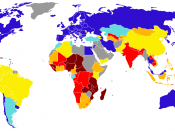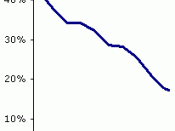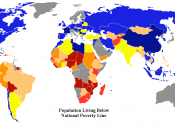What are the main criticisms of the 'Dollar a day' method of calculating poverty?
Poverty exists throughout the whole world. In all its forms, be it relative or absolute, poverty is a mass epidemic in third-world countries especially. To successfully counter poverty as a whole therefore, it is imperative to compile and calculate the true extent of it. The most respected and most cited compilation of poverty is carried out by the World Bank (bank henceforth).
Critics argue that the fundamental premise on which poverty is calculated, is flawed. It is flawed to such an extent that according to Reddy and Pogge the banks estimate of world poverty is underestimated by 30 - 40%. The erroneous premise is the use of the 'Dollar a day method' as a universal judgement of poverty.
On an international level majority of the residents of the world do not use the Dollar, apart from the U.S
and a select few countries. The currencies of the world are wildly disproportionate to the value of the Dollar, for example, one US Dollar is equivalent to 53 Bangladeshi Takas.
To judge poverty on an international level it becomes necessary to use an international standard. The international standard, which was originally set at one Dollar is currently set at $1.08 a day. This can be taken literally to mean that a person anywhere in the world who lives on the equivalent of ã1.08 or less a day is absolutely poor.
To be able to use the criteria of a 'Dollar a day' for calculating poverty between countries with different currencies and different economies it is important that "instead of using exchange rates to compare cross-national living standards, measures of income in local currencies are converted on an internationally comparable scale, using Purchasing Power Parities" (PPP henceforth) (Townsend,


